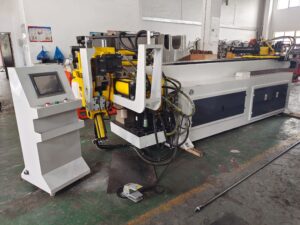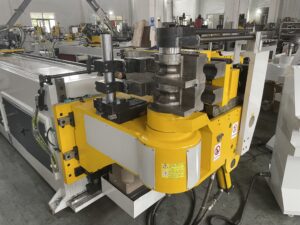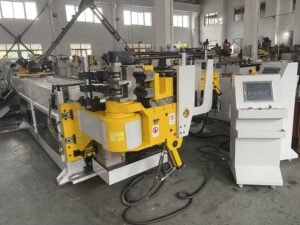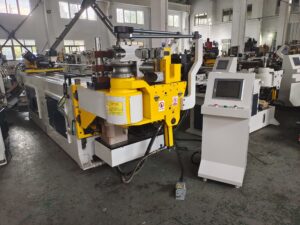Is it Okay to Bend a Copper Pipe? A Comprehensive Guide to Copper Pipe Bending
Pipe bending copper is a common task in various plumbing and HVAC applications. From creating intricate shapes for water lines to crafting unique designs for decorative elements, bending copper pipes offers versatility and flexibility. However, the question arises: is it okay to bend a copper pipe? The answer, like most things in the world of plumbing, is nuanced. It depends on the specific application, the pipe’s size and thickness, and the desired bend radius.

Understanding the Properties of Copper
Copper is a highly malleable metal, meaning it can be easily shaped and deformed without breaking. This characteristic makes it an ideal material for bending, especially for intricate shapes. However, copper’s ductility, the ability to withstand deformation without fracturing, varies depending on the temper of the copper.
- Soft Temper: This type of copper is the most malleable and easiest to bend. However, it’s also the least durable and prone to cracking under excessive stress.
- Hard Temper: This copper is harder and less malleable than soft temper. Hard temper copper is often chosen for applications requiring durability and structural integrity.
- Medium Temper: This type of copper falls in between soft and hard temper, balancing malleability and strength.
Determining the Bend Radius
The bend radius is crucial for successful copper pipe bending. It refers to the minimum distance between the inside of the bend and the center of the pipe. A smaller bend radius implies a tighter bend, while a larger radius indicates a gentler curve.
Factors influencing the bend radius:
- Pipe Size: Smaller diameter pipes can handle tighter bends compared to larger pipes.
- Pipe Thickness: Thicker pipes require a larger bend radius to prevent cracking.
- Copper Temper: Soft temper copper can handle tighter bends than hard temper copper.
- Desired Bend Angle: The angle of the bend also influences the required radius. A larger bend angle demands a larger bend radius.
Bending Methods: A Detailed Look
Various methods can be employed for bending copper pipes, each with its advantages and disadvantages:
1. Hand Bending:
- Tools: This method utilizes specialized hand-bending tools, including spring benders, pipe benders, and hickeys.
- Process: Hand bending involves manually applying pressure to the pipe, gradually shaping it to the desired angle.
- Advantages: Offers flexibility and control over the bend, suitable for small-scale projects and intricate shapes.
- Disadvantages: Requires practice and skill to achieve consistent results, not ideal for large-diameter pipes or tight bends.2. Hydraulic Bending:
- Tools: Hydraulic pipe benders utilize hydraulic pressure to bend the pipe.
- Process: The pipe is inserted into the bender, and hydraulic pressure is applied to form the bend.
- Advantages: Produces consistent and accurate bends, suitable for large-diameter pipes and tight bends.
- Disadvantages: Requires specialized equipment and can be costly for small-scale projects.
3. Machine Bending:
- Tools: Machine benders are automated machines designed specifically for bending pipes.
- Process: The pipe is fed into the machine, which automatically bends it to the desired angle.
- Advantages: Offers high accuracy and speed, ideal for large-scale production and complex shapes.
- Disadvantages: Requires significant investment in equipment, not suitable for small-scale projects or custom bends.
Potential Risks of Bending Copper Pipe
While bending copper pipe is a common practice, it’s crucial to be aware of potential risks:
- Cracking: Bending the pipe too tightly or with insufficient support can lead to cracks, especially in hard temper copper or thicker pipes.
- Wrinkling: Wrinkles or creases can form on the pipe’s surface, reducing its structural integrity and flow capacity.
- Wall Thinning: Constant bending can thin the walls of the pipe, potentially compromising its strength and durability.
- Work Hardening: Bending copper can cause work hardening, making the metal harder and more brittle.
Best Practices for Successful and Safe Bending
To ensure a successful and safe bending process:
- Choose the Right Temper: Opt for soft temper copper for tight bends and hard temper for greater durability.
- Use Proper Tools: Select bending tools appropriate for the pipe size and desired bend radius.
- Support the Pipe: Ensure the pipe is adequately supported during the bending process to prevent cracking or wrinkling.
- Avoid Excessive Bending: Do not bend the pipe beyond its recommended limits to prevent wall thinning or work hardening.
- Heat the Pipe: For tight bends or thick pipes, consider heating the pipe slightly to increase its malleability.
- Inspect for Defects: After bending, carefully inspect the pipe for any cracks, wrinkles, or thinning.
Case Study: Bending Copper Pipe for a Water Line Installation
A homeowner decided to install a new water line to his garden. The project involved bending a 1/2-inch copper pipe to navigate around a tree and connect to a water spigot.
Challenges:
- Tight Bends: The homeowner needed to make several tight bends to steer the pipe around the tree roots.
- Limited Space: The area surrounding the tree had limited space for bending tools.
- Risk of Cracking: The homeowner was concerned about cracking the pipe due to the tight bends.
Solution:
The homeowner decided to use a hand-bending tool with a spring to create the tight bends. He carefully supported the pipe during the bending process to prevent cracking. He also heated the pipe slightly before each bend to increase its malleability.
Outcome:
The homeowner successfully installed the water line, achieving the desired tight bends without any cracking or damage.
Click for more detailed information.




